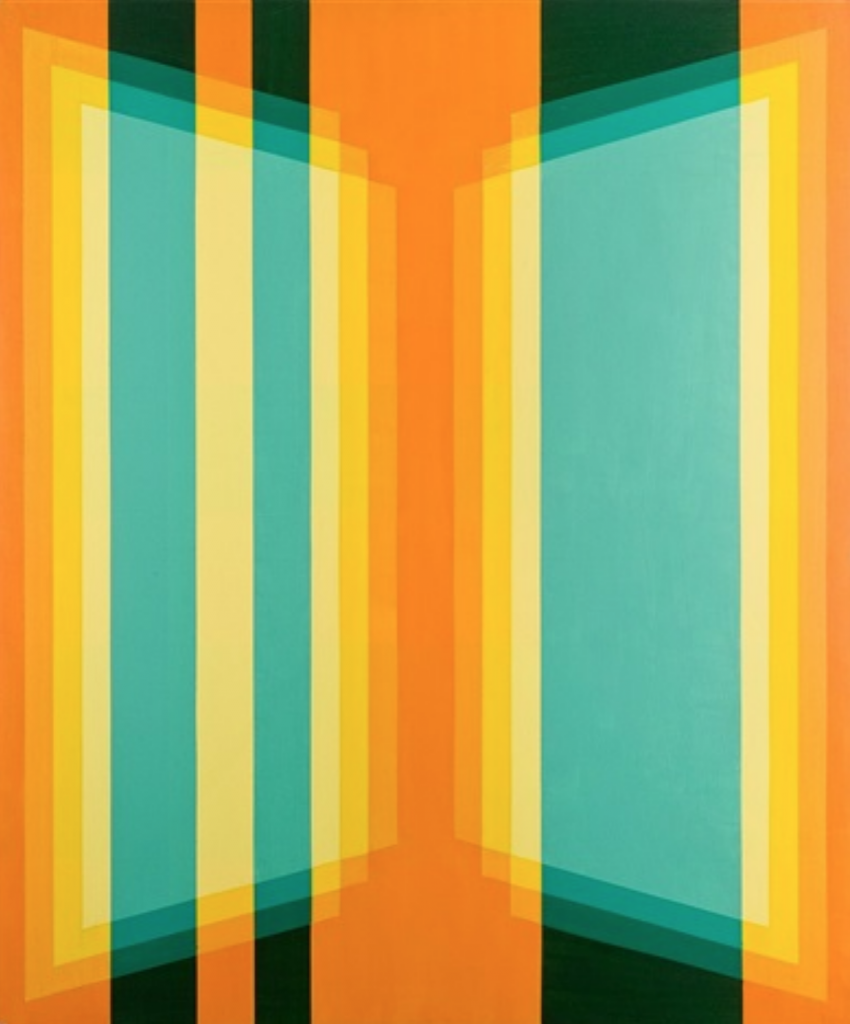In the 1960s, Joseph Kyle Pioneered a Unique Style That Would Change the Shape of Canadian Art. Discover More About His Distinctive Legacy


Artnet Gallery Network

The word “synoptic” derives from a Greek root and means “seeing altogether.” Canadian artist Joseph Kyle, who developed a unique synthesis of abstraction and color, sought to encapsulate that unified vision in his art-making, developing a singular style he called syn-optics.
Born in Belfast in 1923, Kyle emigrated to Saskatchewan, Canada, in 1930, later moving to Vancouver, where he became part of the city’s dynamic art scene in the 1960s. Influenced by Op art, Kyle aimed to fuse vibrating colors with pulsating patterns in his work. But rather than creating optical illusions associated with Op art, Kyle aimed to produce paintings that worked as an interactive whole rather than an assembly of individual compositional devices.
His kaleidoscopic paintings almost have the look of stained glass, with geometric shard-like shapes of color combining to render a singular form. “We notice, in spite of the crisp edges, the form has no boundary,” the Vancouver gallery Elan Fine Art wrote in a description of Kyle’s work. “It moves across the canvas as a dancer moves across the stage. Form and color operate as one—a marriage, where neither is subservient to the other but dependent on each other for the essential experience of the painting.”
Paul Kyle, the artist’s son and owner of Elan Fine Art, is devoted to preserving his father’s legacy. “He seized every brief opportunity to paint alone in his studio, but never shooed any of us away,” Paul said. “It was by watching and talking with him that I came to love art and became a dealer some 45 years ago, representing him and his work.”
Kyle proved to have a lasting influence on the Canadian West Coast art scene, particularly for his emphasis on interdisciplinary practice. He helped pioneer the Intermedia Society with Victor Doray and Jack Shadbolt, which encouraged experimental, interdisciplinary art practices that put new electric technology in the hands of artists and gave rise to a new generation of creators.
What’s more, Kyle founded the Victoria College of Art and served as principal and teacher there for 25 years while maintaining his own practice. His tenure had a tremendous impact on the practices of innumerable young artists.
“To this day, visiting artists from around the world to the gallery have found themselves studying Kyle’s paintings,” the gallery said. “His structured, symmetrical forms and composition is anything but restrictive—there is a sense of freedom and exaltation from within.”
Discover more about Kyle’s legacy with the Artnet Gallery Network’s Elan Fine Art.
